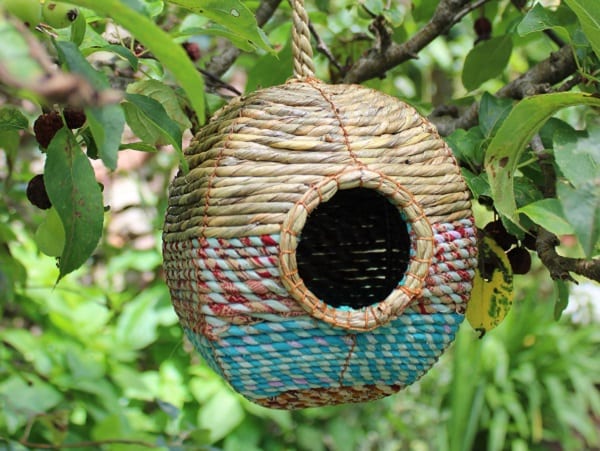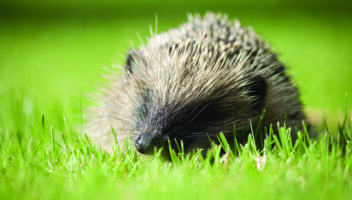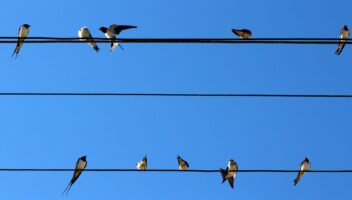It is not only us humans getting more active in the garden in spring. This is the season our beloved garden birds enter their key breeding period. With help from the experts at Wildlife World, we offer tips to help and support birds in spring.
Spring is a crucial time of year for our garden birds. As the key breeding period begins, they look for a place to nest and raise their chicks. Increasing urbanisation means there is a lack of natural spaces for birds to nest in.
One simple way we can help is by putting up nest boxes – particularly if you do not have large, old, trees in the garden that would be one of the usual key nesting sites.
Choosing a Nest Box
Different bird species favour different types of nest box, so having more than one will increase the chances of encouraging a variety of birds. The main nest box types are either open-fronted or hole-based.
Open-Fronted Nest Boxes

Open-fronted nest boxes are favoured by robins, wagtails and wrens. They should be positioned nestled well into vegetation – a fork in a tree or a spot on an ivy-covered tree or fence is ideal.
Hole-Fronted Nest Boxes
 The most common other form of nest box is hole-fronted. A wide range of bird species, including the various tits and sparrows, use these. The birds using hole-fronted nest boxes like a direct, clean flight route into the nest box. These shouldn’t be nestled into vegetation and should be positioned fairly high off the ground – around two metres to 3.5 metres high is ideal. Because these nest boxes are a little more exposed to the elements, secure in place angled slightly downwards or forwards so any rain water will naturally fall away, allowing the birds to stay as dry as possible.
The most common other form of nest box is hole-fronted. A wide range of bird species, including the various tits and sparrows, use these. The birds using hole-fronted nest boxes like a direct, clean flight route into the nest box. These shouldn’t be nestled into vegetation and should be positioned fairly high off the ground – around two metres to 3.5 metres high is ideal. Because these nest boxes are a little more exposed to the elements, secure in place angled slightly downwards or forwards so any rain water will naturally fall away, allowing the birds to stay as dry as possible.
Once you have birds in your nest boxes, it is really important not to disturb them. If you want to get a close-up, you could set up a camera nest box and watch the baby birds from your living room – they are bound to become your new favourite spring programme!
Nest Box Top Tips
1. Always ensure your nest box is secured really well onto the tree / fence / building so there is no risk of it falling off in bad weather conditions.
2. Place open-fronted nest boxes into vegetation, but site hole-fronted nest boxes with a clear, direct route for birds to fly in and higher of the ground.
3. Angle nest boxes very slightly downwards (especially hole-fronted ones) to protect them from the rain
4. If possible, position nest boxes so they face between north and east, allowing them to catch the first rays of sunlight (it is, after all, the early bird that catches the worm)
5. Don’t put any of your own material into the nest box; birds will gather it themselves. You could leave some wool or straw in your garden for the birds to use if they so wish
Feeding Birds in Spring
We all love feeding birds – it is estimated that half of UK households do it. Putting out a variety of feeds that are tailored to the needs of the season should ensure the birds keep coming back for more.
In spring, high-protein food sources are particularly beneficial. The extra protein supports birds through the breeding season and helps returning migratory birds replenish the tens of thousands of calories used during their journey.
Sunflower seeds are a perfect food source for spring, enjoyed by a wide variety of birds including finches and tits. Place them in a seed feeder, or sprinkle on your bird table or ground feeder.
Mealworms or calciworms are also beneficial in spring. Calciworms are only relatively recently available and are similar to dried mealworms but with extra nutritional value. They are high in insectivorous proteins as well as being an excellent source of calcium, aiding bone and feather strength and egg production.





